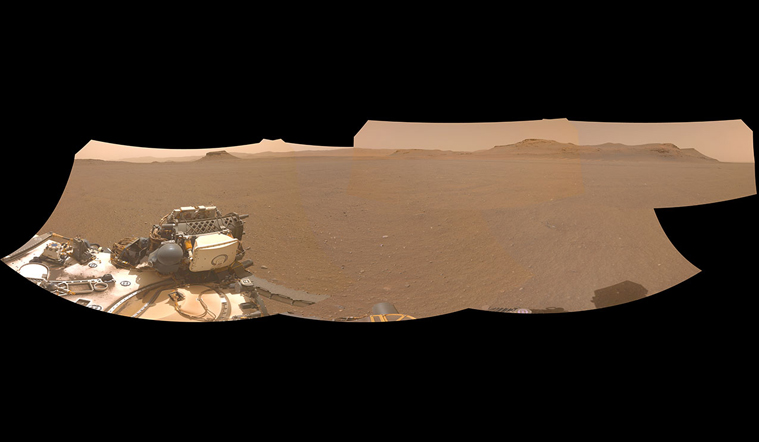Along with its many science tasks, NASA’s Perseverance Mars Rover is also conducting another important duty: scouting for locations where the planned Mars Sample Return (MSR) Campaign can land. The rover is looking for sites that are relatively flat and have lander-friendly terrain.
MSR is an ambitious mission planned by NASA that will involve a spacecraft landing on the red planet, and collecting sample tubes filled with Martian rocks and sediment so that tehy can be sent back to Earth. Once those samples reach earth, laboratories with much more sophisticated equipment than can be fitted on Perseverance will study them and look for signs of past microscopic life.
The MSR Entry, Descent and Landing team is looking for a pancake-flat landing zone with a 60-metre radius so that the lander can land without any complications. They are also looking to choose an area that doesn’t have large rocks, sand dunes and steeply angled terrain nearby as this will ease the path for the MSR recovery vehicle to efficiently grab the tubes from perseverance so that it can be given to the Mars Ascent Vehicle.
The MSR already has a location in mind and they refer to it as “landing strip,” because it appears to be as flat and long as a runway based on images taken from orbit. But the rover can go closer for a view from the surface.
“We had been eyeing these locations since before Perseverance’s landing, but imagery from orbit can only tell you so much. Now we have some up-close-and-personal shots of the landing strip that indicate we were right on the money. The landing strip will more than likely make our shortlist of potential landing and caching sites for MSR,” said Al Chen, Mars Sample Return Systems Engineering and Integration manager at JPL, in a press statement from the space agency.
The first stage of MSR is already under way. The Perseverance rover has cored collected and sealed nine Martian rock samples to date. The ninth sample was collected on July 6 and is the first from the Jezero Crater’s ancient river delta. According to the mission scientists’ plans, Perseverance will drop (or cache) tubes on the surface after they are collected so that they can be retrieved during future MSR surface operations.
!function(f,b,e,v,n,t,s)
{if(f.fbq)return;n=f.fbq=function(){n.callMethod?
n.callMethod.apply(n,arguments):n.queue.push(arguments)};
if(!f._fbq)f._fbq=n;n.push=n;n.loaded=!0;n.version=’2.0′;
n.queue=[];t=b.createElement(e);t.async=!0;
t.src=v;s=b.getElementsByTagName(e)[0];
s.parentNode.insertBefore(t,s)}(window, document,’script’,
‘https://connect.facebook.net/en_US/fbevents.js’);
fbq(‘init’, ‘444470064056909’);
fbq(‘track’, ‘PageView’);







